Welcome to the Amira-Avizo Software Use Case Gallery
Below you will find a collection of use cases of our 3D data visualization and analysis software. These use cases include scientific publications, articles, papers, posters, presentations or even videos that show how Amira-Avizo Software is used to address various scientific and industrial research topics.
Use the Domain selector to filter by main application area, and use the Search box to enter keywords related to specific topics you are interested in.
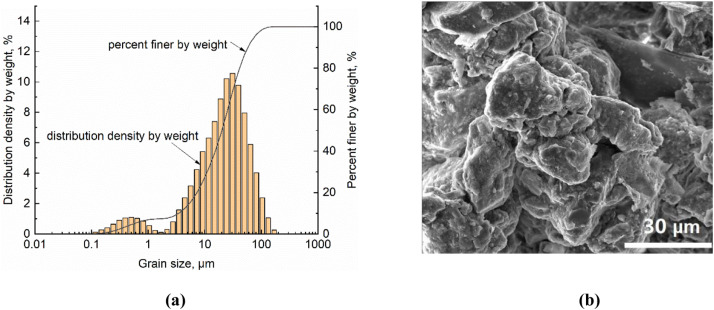
3D characterisation of the particle kinematics during loess collapse is performed based on X-ray micro-computed tomography.
Particle displacements and rotations associated with the collapse are determined.
The volumetric strain is shown to be significantly heterogeneous at single-particle scale.
The evolution of particle-to-particle contacts is found to be much more complex than previously stated.
An apparatus is specially designed to perf... Read more
B. Yu, W. Fan, J.H. Fan, T.A. Dijkstra, Y.N. Wei, T.T. Wei
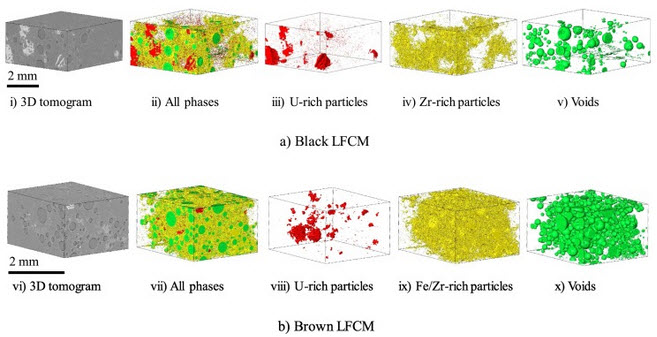
Decommissioning of the damaged Chernobyl nuclear reactor Unit 4 is a top priority for the global community. Before such operations begin, it is crucial to understand the behaviour of the hazardous materials formed during the accident. Since those materials formed under extreme and mostly unquantified conditions, modelling alone is insufficient to accurately predict their physical, chemical and, predominantly, mechanical behaviour. Meanwhile, knowledge of the mechanical characteristics of thos... Read more
C.Paraskevoulakos, J.P.Forna-Kreutzer, K.R.Hallam, C.P.Jones, T.B.Scott, C.Gausse, D.J.Bailey, C.A.Simpson, D.Liu, C.Reinhard, C.L.Corkhill, M.Mostafavi
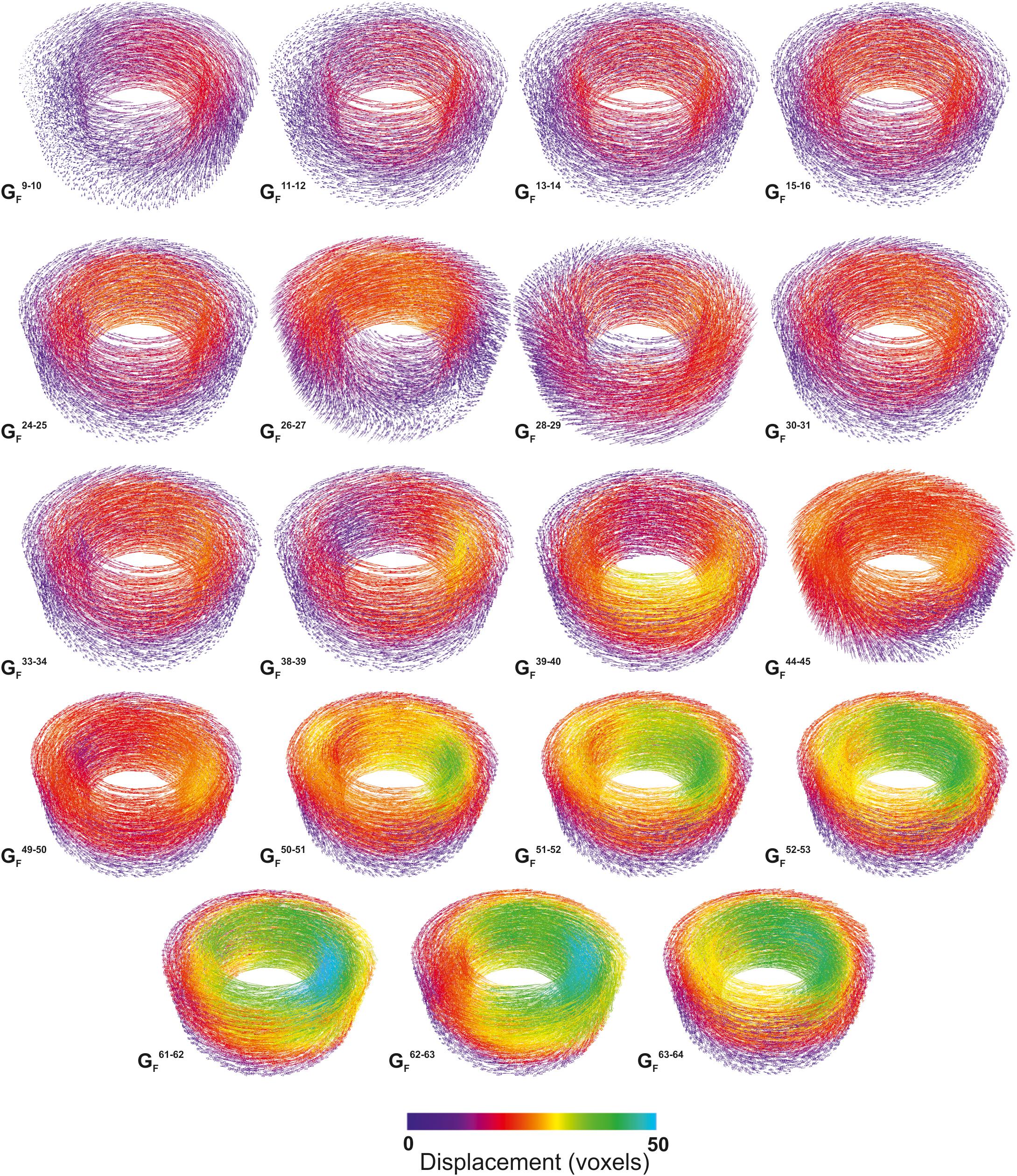
Quantifying Microstructural Evolution in Moving Magma
Many of the grand challenges in volcanic and magmatic research are focused on understanding the dynamics of highly heterogeneous systems and the critical conditions that enable magmas to move or eruptions to initiate. However, we are usually unable to observe the processes directly. Here we give a short synopsis of the new capabilities and highlight the potential insights that in situ observation can provide. We present the first 3D data showing the evolving textural heterogeneity within a sh... Read more
Katherine J. Dobson1, Anja Allabar, Eloise Bretagne, Jason Coumans, Mike Cassidy, Corrado Cimarelli, Rebecca Coats, Thomas Connolley, Loic Courtois, Donald B. Dingwell, Danilo Di Genova, Benjamin Fernando, Julie L. Fife, Frey Fyfe, Stephan Gehne, Thomas Jones, Jackie E. Kendrick, Helen Kinvig, Stephan Kolzenburg, Yan Lavallée, Emma Liu, Edward W. Llewellin, Amber Madden-Nadeau, Kamel Madi, Federica Marone, Cerith Morgan, Julie Oppenheimer, Anna Ploszajski, Gavin Reid, Jenny Schauroth, Christian M. Schlepütz, Catriona Sellick, Jérémie Vasseur, Felix W. von Aulock, Fabian B. Wadsworth, Sebastian Wiesmaier and Kaz Wanelik
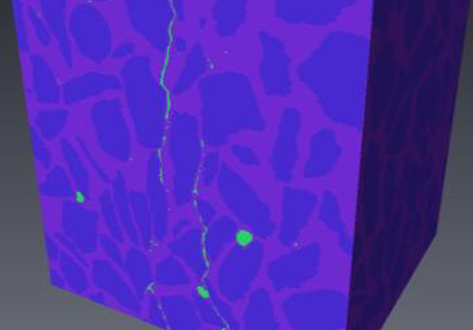
X-ray Computed Tomography (XCT) is a powerful technology that can accurately image the internal structures of composite and heterogeneous materials in three-dimensions (3D). In this study, in-situ micro XCT tests of concrete specimens under progressive compressive loading are carried out. The aim of the observations is to gain a better understanding of 3D fracture and failure mechanisms at the meso-scale. To characterise the fracture evolution as the deformation increases, two methods are use... Read more
College of Civil Engineering and Architecture, Zhejiang University | School of Mechanical, Aerospace and Civil Engineering, the University of Manchester | Manchester X-ray Imaging Facility | Oxford Martin School and Department of Materials
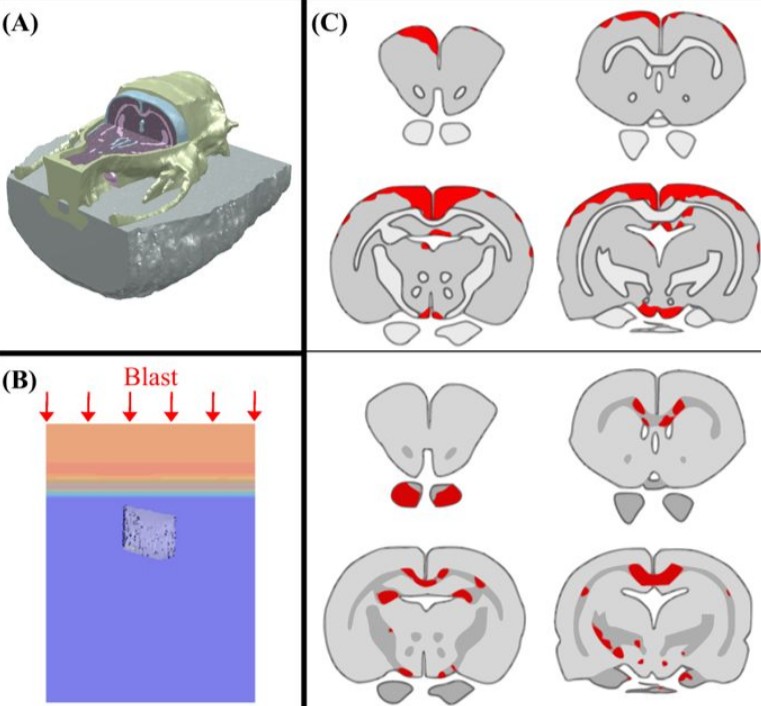
Cognition based bTBI mechanistic criteria; a tool for preventive and therapeutic innovations
Blast-induced traumatic brain injury has been associated with neurodegenerative and neuropsychiatric disorders. To date, although damage due to oxidative stress appears to be important, the specific mechanistic causes of such disorders remain elusive. Here, to determine the mechanical variables governing the tissue damage eventually cascading into cognitive deficits, we performed a study on the mechanics of rat brain under blast conditions. To this end, experiments were carried out to analyse... Read more
Daniel Garcia-Gonzalez, Nicholas S. Race, Natalie L. Voets, Damian R. Jenkins, Stamatios N. Sotiropoulos, Glen Acosta, Marcela Cruz-Haces, Jonathan Tang, Riyi Shi & Antoine Jérusalem
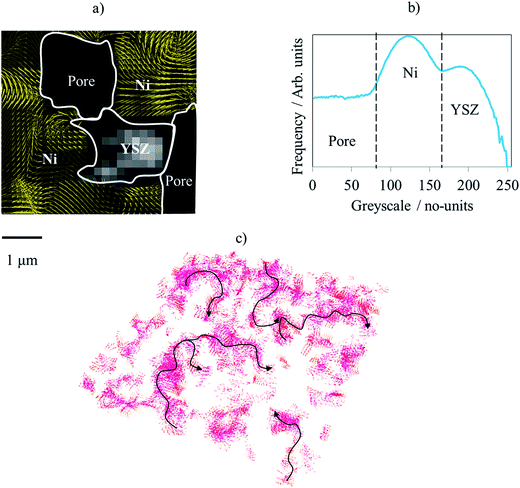
Evaluating microstructure evolution in an SOFC electrode using digital volume correlation
Degradation mechanisms within solid oxide fuel cells (SOFC) during thermal cycling limit operational start-up times and cell lifetime, and must therefore be better understood and mitigated. This work explores such mechanisms using digital volume correlation (DVC) techniques applied to lab-based X-ray tomograms where the microstructural evolution is evaluated during the operational cycling of a Ni–YSZ/YSZ cell. To emulate reduced start-up times, five tomograms were collected over four operat... Read more
T. M. M. Heenan, X. Lu,, D. P. Finegan,, J. Robinson, F. Iacoviello, J. J. Bailey, D. J. L. Brett and P. R. Shearing
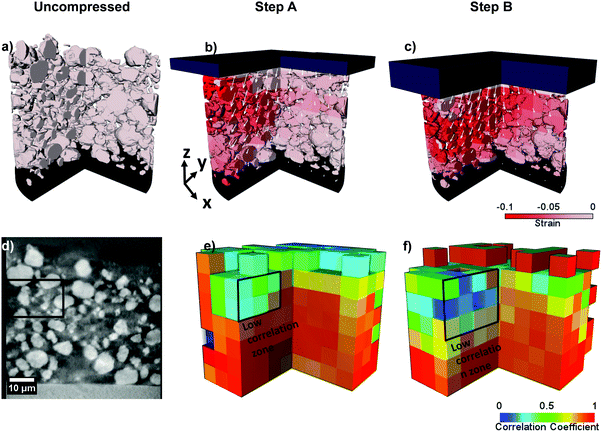
Lithium-ion (Li-ion) batteries operate via electrochemical reactions between positive and negative electrodes, formed by complex porous microstructures. An improved understanding of these materials can lead to a greater insight into the link between microscopic electrode morphology and macroscopic performance. The practice of calendering electrodes after manufacturing has been widely used to increase the volumetric energy density and improve the electrical contact between electrode... Read more
S. R. Daemi,X. Lu, D. Sykes, J. Behnsen, C. Tan, A. Palacios-Padros, J. Cookson, E. Petrucco, P. J. Withers, D. J. L. Brett and P. R. Shearing

Modelling deformation and fracture in confectionery wafers
The aim of this research is to model the deformation and fracture behaviour of brittle wafers often used in chocolate confectionery products.
Three point bending and compression experiments were performed on beam and circular disc samples respectively to determine the ‘apparent’ stress-strain curves in bending and compression. The deformation of the wafer for both these testing types was observed in-situ within an SEM. The wafer is modelled analytically and numerically as a composi... Read more
Idris K. Mohammeda, Maria N. Charalambides , J. Gordon Williams , John Rasburn
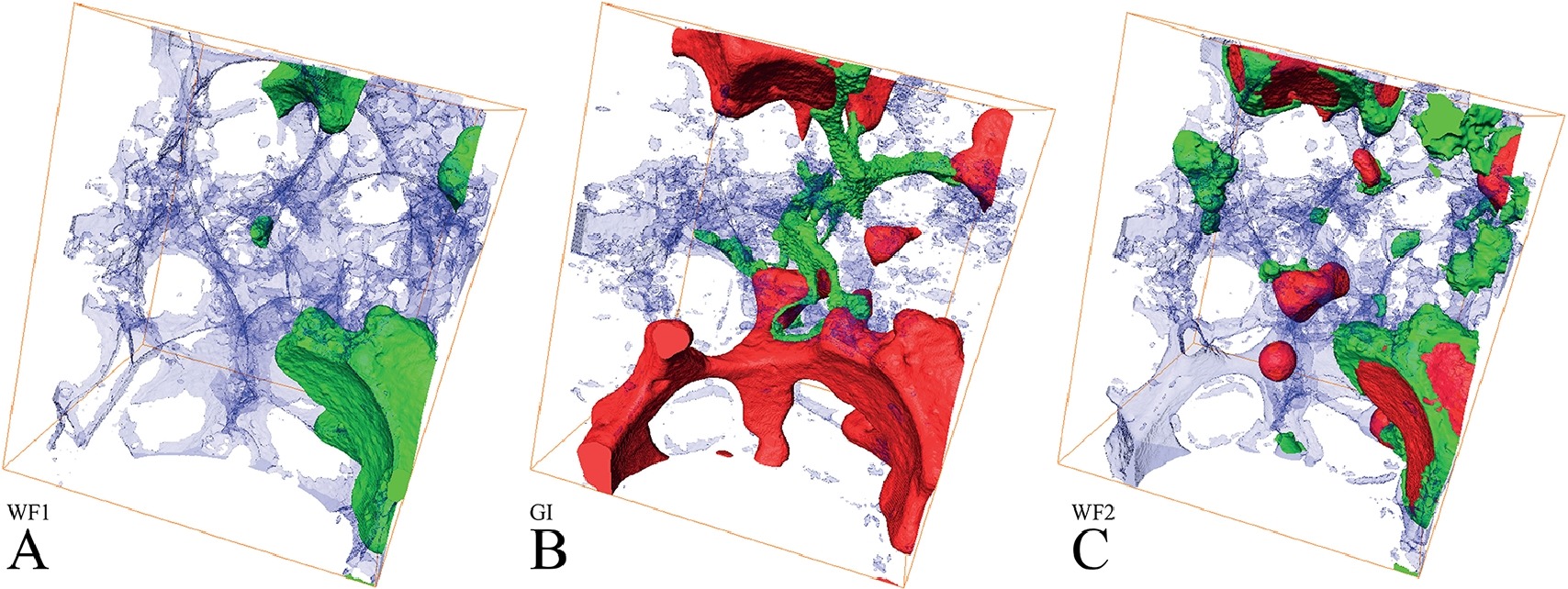
X-ray micro-tomography is used to image the pore-scale configurations of fluid in a rock saturated with three phases – brine, oil and gas – mimicking a subsurface reservoir, at high pressure and temperature. We determine pore occupancy during a displacement sequence that involves waterflooding, gas injection and water re-injection. In the water-wet sample considered, brine occupied the smallest pores, gas the biggest, while oil occupied pores of intermediate size and is displaced ... Read more
Alessio Scanziani, Kamaljit Singh, Tom Bultreys, Branko Bijeljic, Martin J. Blunt